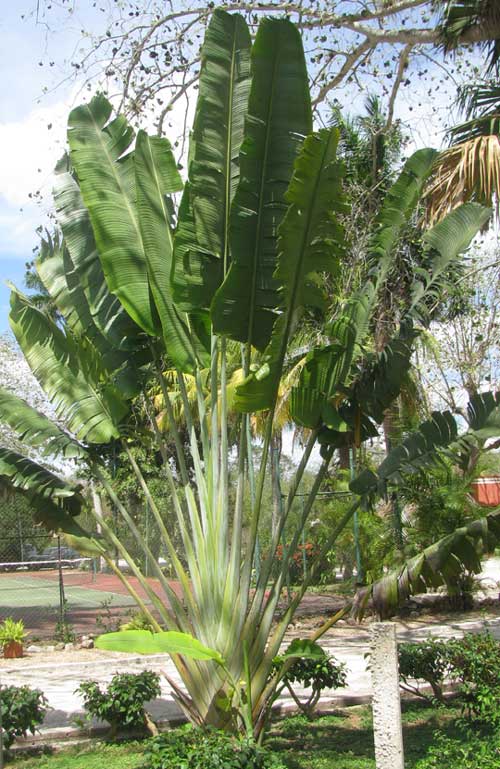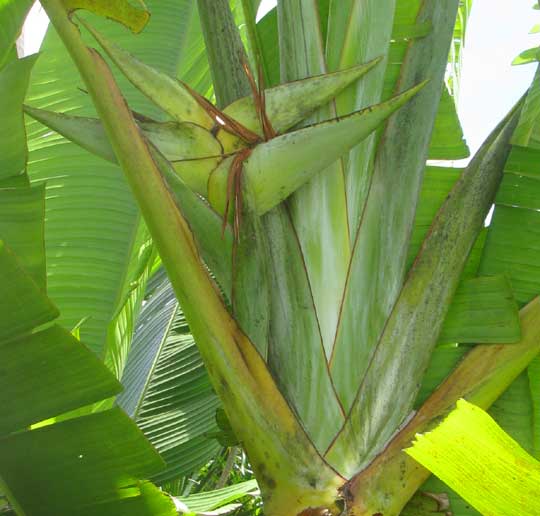Excerpts from Jim Conrad's
Naturalist Newsletter
from the March 25, 2012 Newsletter issued from Hacienda Chichen Resort beside Chichén Itzá Ruins; limestone bedrock; elevation ~39m (~128ft), N20.675°, W88.569°; central Yucatán state, MÉXICO
TRAVELER'S TREE
At a hotel across the road from the Hacienda you can see the, 20-ft-tall (6m), eye-catching plant shown below:

That plant is reminiscent of a banana tree, but notice how the leaves are arrayed in one plane, like feathers in a peacock's tail -- they're "distichous," botanists say. Leaves on Banana plants arise every which way -- they're "spirally arranged."
Our plant's flowers also are distichously arranged, as seen in the top, left quarter of the picture below:

Those of you familiar with gorgeous, southern-African Bird-of-Paradise plants will recognize that our mystery plant's flat inflorescence with stacked bracts from which flowers arise is very similar. In fact, Bird-of-Paradises and our present plant are both members of the Bird-of-Paradise Family, the Strelitziaceae.
Our pictures show a Traveler's Tree -- also called Traveler's Palm, though it's not palm -- RAVENALA MADAGASCARIENSIS, a native of Madagascar. The "traveler's" part of the name derives from the fact that thirsty travelers find rainwater pooling at the bases of the plant's petioles, which are U-shaped in cross-section, as well as in the horizontal, boat-shaped flower bracts. Also, there's a general tendency for the tree's fan of leaves to orient themselves east and west, thus providing a crude compass.
The plant in our picture is a young one. On mature plants the lower leaves and petioles die back and fall away exposing a sturdy, gray trunk.
Besides being one of the world's most exotic looking tree-sized plants, Traveler's Trees are so unique that they're the only species in their genus -- they're "monotypic." To a naturalist, meeting a monotypic species is always special, a time to pause and savor a "unique variation on the theme of living on Earth."